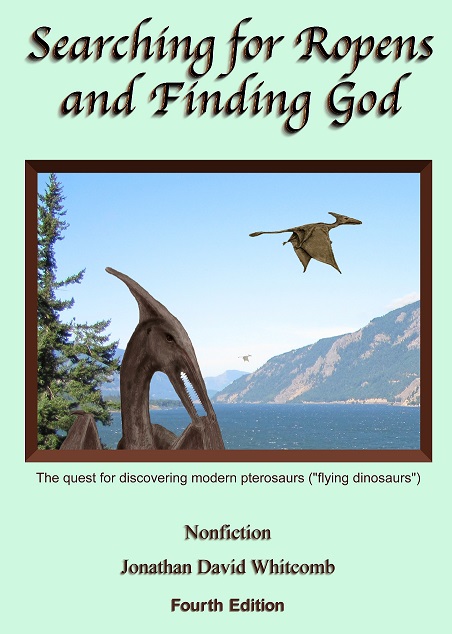Bioluminescent Glow of the Flying Creature
I sometimes get a report of a large glowing creature, a shocking animal seen at night, even in the United States. The latest one was about two miles from Point Pleasant West Virginia, on the night of October 20, 2014. An eyewitness may search online for a similar sighting in the same general area where he/she witnessed the flying creature. This may result in disappointment, for reported sightings may be in other areas of the country but not near that person’s area. Please be aware of two factors:
- These large ropens (or other glowing flying creatures) can travel long distances
- They do not always glow and are not always noticed at night
Please also be aware that more than one species may be involved and that the ropen may be only one of two general types of modern pterosaur, both of which may have bioluminescent capabilities, at least in some species. Much scientific research needs to be done on this, even thought it now lives within cryptozoology, not yet acknowledged commonly by many scientists.
What one Book Reports About the Ropen Light
Two chapters of Searching for Ropens and Finding God cover this strange attribute of at least some ropens, this ability to glow with a bright light:
From page 41: How radical is the glow of a modern dragon or non-extinct pterosaur! Yet a fire-breathing dragon, to people in old times, was thought to be a real animal. Why should old stories all be completely fictional?
As I reviewed the videotaped interviews of natives on Umboi Island, early in 2004, my imagination was fired by a conviction: Old stories may contain truth. The fiction of Bilbo’s encounter with Smaug, the great dragon who burned up a town with his fiery breath, left an impression (like dieing embers) too dim to fire up my resolve to fly away to Papua New Guinea; but older ideas about dragons let in just enough light to spark my imagination: I believed native testimonies of a glowing creature flying over a remote tropical island.
Bioluminescence is more common than most Americans would imagine, as I would see for myself later that year. Could old stories of fiery dragons include some truth? Could that kind of glow have lead away our early ancestors into imaginative fiction: dragons burning down towns with fiery breath? . . .
From page 277: The sighting of a glowing “dragon” in England, around 1987, could be dismissed, for it was just a ten-year-old girl watching the stars, and that’s just one story. The two sightings of huge glowing flying creatures in the San Fernando Valley could be dismissed, for they were near Hollywood (the land of fictional creations), and that’s just two stories. The glowing creatures flying in the Caribbean could be dismissed, for they appear like nothing in any biology textbook, and that’s just two sightings. But scan the landscape of sighting reports and see what few other humans have seen for the past two centuries: Trees connected by underground roots, revealing the edge of a forest. How many eyewitnesses there must be who never contacted me about appearances of glowing flying creatures!
.
Searching for Ropens and Finding God, fourth edition, by Whitcomb
This religious/spiritual cryptozoology book should be published in the fourth edition before the end of October, 2014. Please see the latest posts of this blog.
From the title page of this nonfiction book:
This overshadows common true-life adventures, revealing the early stages of what may become the most unsettling scientific discovery since Galileo and Copernicus. It soars above disputes about religion, revealing why an official discovery of an extraordinary animal was delayed for so long. Above all, this explores human experiences—of eyewitnesses and those who interviewed them. People have become connected by common encounters: Persons of various faiths, with various levels of education, from various countries and cultures, have seen a living pterosaur.
.
###



